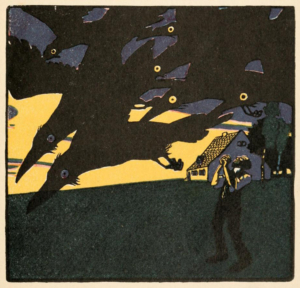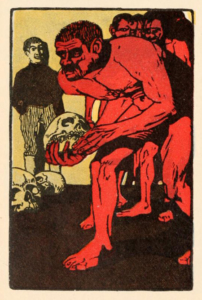 When people think about meaningless deaths in the First World War, they tend to think of one of two things: either fairly abstract numbers with a lot of zeroes in them, like death was buying people wholesale or something, or Wilfred Owen. Speaking for myself, at least, I tend not to think very often about all the lost possibility and talent on “the other side.” But the losses were there and felt, perhaps, even more profoundly by the conquered.
When people think about meaningless deaths in the First World War, they tend to think of one of two things: either fairly abstract numbers with a lot of zeroes in them, like death was buying people wholesale or something, or Wilfred Owen. Speaking for myself, at least, I tend not to think very often about all the lost possibility and talent on “the other side.” But the losses were there and felt, perhaps, even more profoundly by the conquered.
And everyone knows that the First World War set the stage for the Second. You probably know all about the horrible terms set at Versailles. You may even know the socio-political details of Sonderweg and the history of post-war German isolationism. But people are rarely able, if ever, to name an individual German loss in the war. Allow me to change that by introducing you to Albert Weisgerber.
Weisgerber became a printer’s apprentice in Frankfurt in 1894, but in the same year switched his focus to the production of “high” art in Munich. He studied at the Akademie der Bildenen Künste, along with fellow students Paul Klee, Kandinsky, and Willi Geiger. He fell under the influence of Impressionism. He visited Paris a few times and started painting cafes in a style mysterious and strange, like a combination of Toulouse-Lautrec and Greco.
But his first big break didn’t come until 1906, when studios in Frankfurt and Munich started buying his paintings. Money and fame, even in modest amounts, didn’t stunt his growth. He visited Florence and studied Italian Primitive Art. In 1911, he had his first big one-man shows in Dresden and Munich.
He didn’t stop growing. His style moved from an incredibly colorful palette and the depiction of social scenes, to a religious focus, darker and with more depth. His work got more symbolic and open-ended. He began asking more questions with his work, rather than piggybacking on a generally popular (at least within his social circle) style. And then in August of 1914 he was drafted into the army.
And then in 1915 he was dead.
I think my favorite work of Weisgerber’s are his illustrations of Grimm’s fairytales. You can download the entire book here, at Open Library. Or, for a real bit of fun, click here, and then on the upper right hand-corner where it says “Read this book aloud.”
some in fear, learning love of slaughter;
Died some, pro patria,
non “dulce” non “et decor” . . .
– Ezra Pound, “Hugh Selwyn Mauberly”
This post may contain affiliate links.








